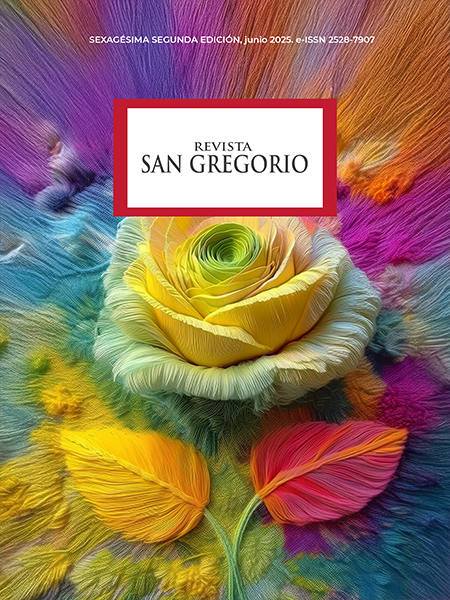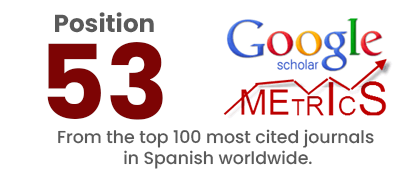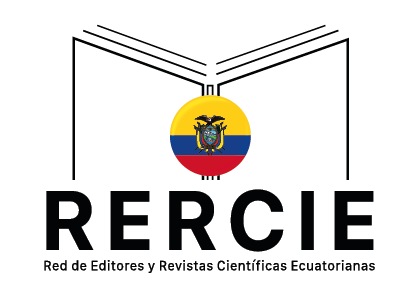Adaptation and Validation of the “Dental Subscale of the Children's Fear Survey Schedule” (CFSS-DS) in the Ecuadorian population
DOI:
https://doi.org/10.36097/rsan.v1i62.3542Keywords:
Factor analysis, dental treatment, survey validation, pediatric dentistry, psychometricsAbstract
Fear and anxiety toward the dentist are challenges that complicate clinical management, especially in children, and can interfere with the success of dental treatment. The aim of this study is to validate the "Dental Subscale of the Children’s Fear Survey Schedule" (CFSS-DS) for Ecuadorian children between the ages of 5 and 12 who were treated at the clinic of the Faculty of Dentistry of the Central University of Ecuador. An observational cross-sectional study was conducted with 147 participants. The CFSS-DS questionnaire, originally developed in English, was translated, adapted, and validated within the Ecuadorian context. The analysis was performed using SPSS v.27 software; internal consistency was assessed using Cronbach’s alpha (α > 0.75), and stability was measured with the Intraclass Correlation Coefficient (ICC = 0.95). Convergent and divergent validity were evaluated through Spearman’s correlation (rs = 0.57) and the Frankl scale, respectively. The proposed questionnaire (CFSS-DS-EC) demonstrated excellent psychometric properties and was confirmed to be a reliable and valid tool for measuring dental anxiety in Ecuadorian children.
Downloads
References
Arapostathis, K. N., Coolidge, T., Tofani, M. I., & Kotsanos, N. (2008). Reliability and validity of the Greek version of the Children's Fear Survey Schedule-Dental Subscale. International Journal of Paediatric Dentistry, 18(5), 374–379. https://doi.org/10.1111/j.1365-263X.2007.00894.x
Bajrić, E., Kobašlija, S., & Jurić, H. (2011). Reliability and validity of Dental Subscale of the Children's Fear Survey Schedule (CFSS-DS) in children in Bosnia and Herzegovina. Bosnian Journal of Basic Medical Sciences, 11(4), 214–218. https://doi.org/10.17305/bjbms.2011.2549
Barbério, G. S. (2017). Confiabilidade e validade do questionário Children’s Fear Survey Schedule-Dental Subscale para avaliação do medo e ansiedade ao tratamento odontológico em crianças [Tesis doctoral, Universidade de São Paulo]. Biblioteca Digital de Teses e Dissertações da USP. https://www.teses.usp.br/teses/disponiveis/25/25145/tde-28092017-183623/
Buchanan, H., & Niven, N. (2002). Validation of a Facial Image Scale to assess child dental anxiety. International Journal of Paediatric Dentistry, 12(1), 47–52. https://doi.org/10.1046/j.0960-7439.2001.00322.x
Cázares de León, F. C. (2019). Miedo al tratamiento odontológico en escolares mexicanos. Revista Cubana de Estomatología, 56(2), 1–13. http://scielo.sld.cu/scielo.php?pid=S0034-75072019000200004&script=sci_arttext&tlng=pt
Cademartori, M. G., Gastal, M. T., & Goettems, M. L. (2019). Validity of the Brazilian version of the Dental Subscale of Children’s Fear Survey Schedule. International Journal of Paediatric Dentistry, 29(6), 736–747. https://doi.org/10.1111/ipd.12543
Cuthbert, M. I., & Melamed, B. G. (1982). A screening device: children at risk for dental fears and management problems. ASDC Journal of Dentistry for Children, 49(6), 432–436. https://pubmed.ncbi.nlm.nih.gov/6960031/
El-Housseiny, A. A., & Farsi, N. M. (2014). Assessment for the Children's Fear Survey Schedule—Dental Subscale. Journal of Pediatric Dentistry, 29(1), 40–46. https://doi.org/10.17796/jcpd.39.1.ml4h38626g66p750
El-Housseiny, A. A., & Farsi, N. M. (2016). Reliability and validity of the Children's Fear Survey Schedule-Dental Subscale for Arabic-speaking children: A cross-sectional study. BMC Oral Health, 16. https://doi.org/10.1186/s12903-016-0205-0
Frankl, S. N., Shiere, F. R., & Fogels, H. R. (1962). Should the parent remain with the child in the dental operatory? Journal of Dentistry for Children, 29(2), 150–163. https://www.aapd.org/globalassets/media/publications/jdc-archives/asdc-sept-oct-1988-v55no5.pdf
Gao, S., Lu, J., Liu, L., & Yu, D. (2021). Prevalence and risk factors of children's dental anxiety in China: A longitudinal study. BMJ Open, 11(4), e043647. https://doi.org/10.1136/bmjopen-2020-043647
Jervøe-Storm, P.-M., Pasztor, G., Storm, T., & Frentzen, M. (2023). Evaluation of children’s anxiety level in relation to a dental visit/treatment and their parents’ dental fear. Journal of Clinical Medicine, 12(20), 6691. https://doi.org/10.3390/jcm12206691
Krikken, J. B., van Wijk, A. J., & ten Cate, J. M. (2013). Measuring dental fear using the CFSS-DS. Do children and parents agree? International Journal of Paediatric Dentistry, 23(2), 94–100. https://doi.org/10.1111/j.1365-263X.2012.01228.x
Ma, L. W. (2015). Reliability and validity of the Chinese version of the Children's Fear Survey Schedule-Dental Subscale. International Journal of Paediatric Dentistry, 25, 110-116. https://onlinelibrary.wiley.com/doi/10.1111/ipd.1210
Manterola, E. R. (2020). Fear in relation to dentistry using the Dental Fear Scale. Revista de la Facultad de Odontología, 35(81), 33–40. https://docs.bvsalud.org/biblioref/2021/05/1179196/art4_vol35num81.pdf
Paglia, L., Giuca, M. R., & Federighi, P. (2017). Reliability and validity of the Italian versions of the Children’s Fear Survey Schedule - Dental Subscale and the Modified Child Dental Anxiety Scale. European Journal of Paediatric Dentistry, 18(4), 305–312. https://doi.org/10.23804/ejpd.2017.18.04.08
Ramos, K. A. (2018). Fear and anxiety in children treated at the dental surgery of the University of Cartagena. Revista Odontológica Mexicana, 22(1), 8–14. https://www.medigraphic.com/pdfs/odon/uo-2018/uoi181b.pdf
Suzy, A. A., & Rahmi, A. N. (2015). Trans-adapted, reliability, and validity of children fear survey schedule-dental subscale in Bahasa Indonesia. Dental Journal (Majalah Kedokteran Gigi), 48(1), 1–6. https://doi.org/10.20473/j.djmkg.v48.i1.p1-6.
Downloads
Published
How to Cite
Issue
Section
License
Copyright (c) 2025 Andrea Cristina Manzano Murillo, Marina Alejandra Cabrera Arias, Ángela Mercedes Murillo Almache

This work is licensed under a Creative Commons Attribution-NonCommercial-NoDerivatives 4.0 International License.


















